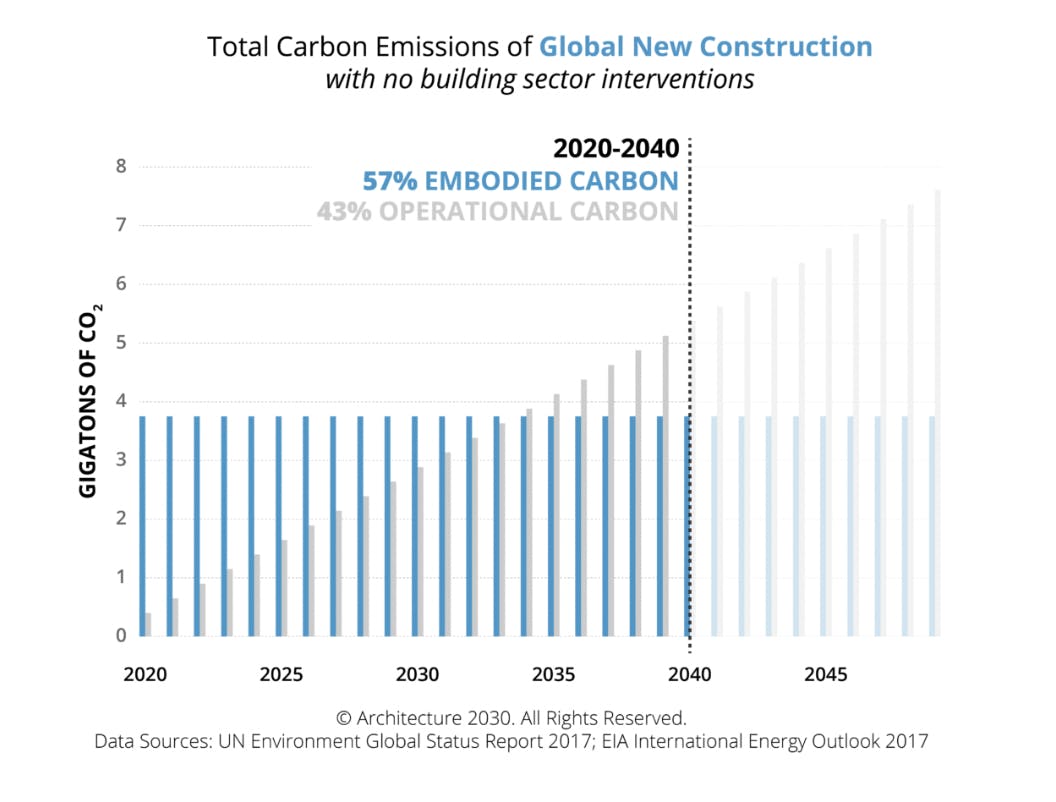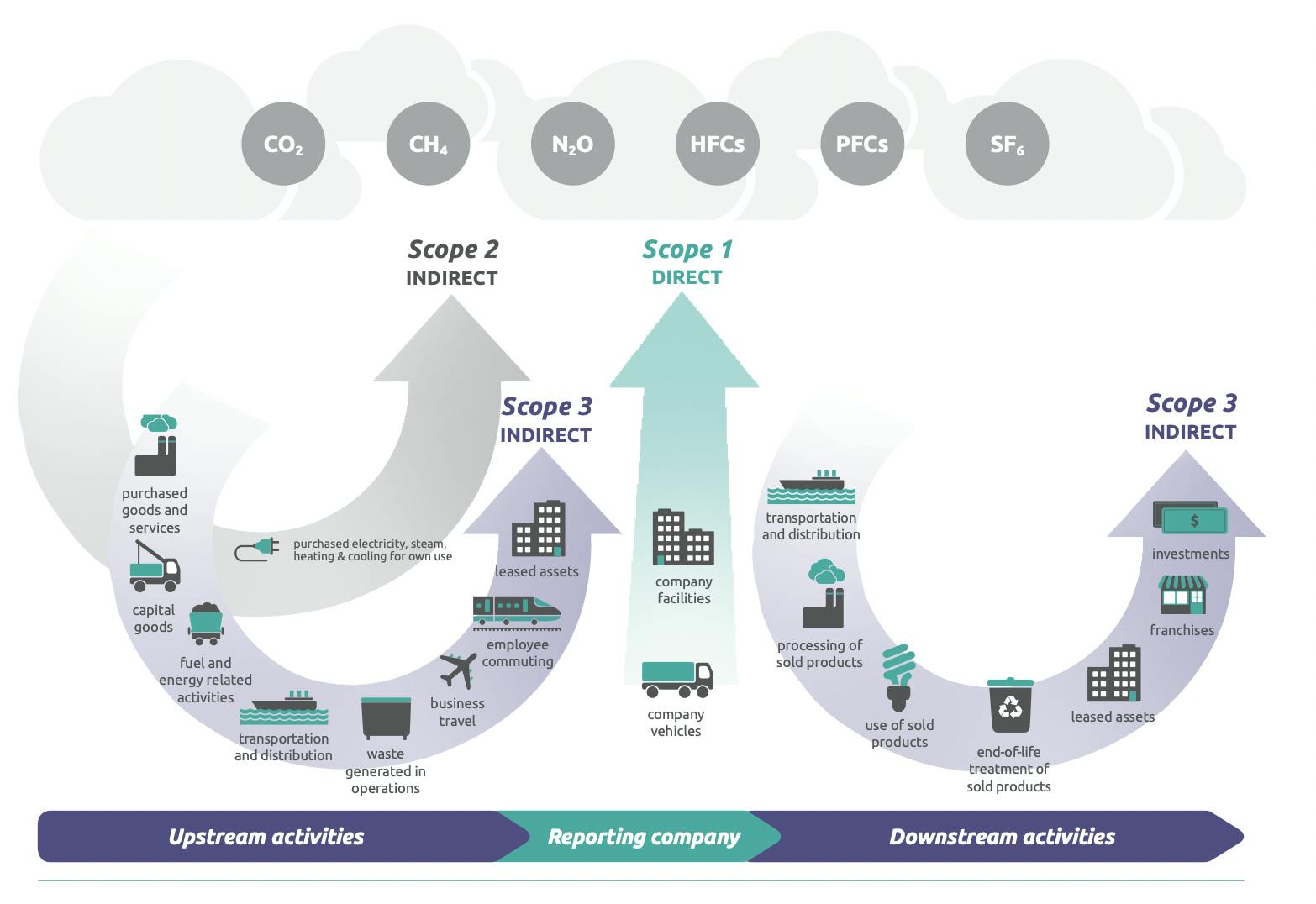Covering Embodied Carbon Series
Covering Embodied Carbon: why should I care?
Read Time 5 mins | Written by: Jay Arehart
TL;DR
- It is expected that approximately half of all emissions from buildings will be embodied between today and 2040
- There is a lack of embodied carbon inclusion sustainable design practices
- Embodied carbon is becoming increasingly regulated and features in many building certification systems
- The carbon impact of a building will become more important to all stakeholders involved in its construction, ownership, operation, and demolition
The impact of the built environment
In our previous post, Covering Embodied Carbon - what is it?, we discussed the differences between embodied and operational carbon. But why should we care about embodied carbon and why is it becoming such a hot topic in the industry? Well, embodied carbon consists of the upfront emissions of materials and construction as well as emissions from building repairs and demolition. Therefore, these are emissions that we can address and reduce now, and with the immediacy of reducing carbon emissions today to avoid global warming, addressing embodied carbon is the a pretty damn good place to start!
In total, buildings are responsible for 39% of annual greenhouse gas emissions, 11% attributed to the embodied carbon and 28% to the operational carbon. Yet, we are seeing a shift in the attributable portions of embodied and operational carbon. Since we are retrofitting many buildings that are not energy efficient, constructing new buildings that are very energy efficient (often all-electric), and decarbonising the energy grid, operational carbon emissions are expected to reduce over time. However, embodied carbon emissions are ‘locked in’ or ‘embodied’ following the completion of construction and can not be changed. As a result, Architecture 2030 expects that between today and 2040 approximately half of all emissions from buildings will be embodied. Therefore, we need to act on embodied carbon in addition to operational carbon in order to fully decarbonise the built environment.

See source: Architecture 2030 - Why the Built Environment?
Sustainable building design must consider embodied carbon
The creation of sustainable buildings is a core element of chartered and licensed design professions as the industry is realising that whilst carbon is a key focus, we must also keep in mind that we are designing buildings for the businesses, residents, and occupants they serve. We can use the broad definition of sustainability to include the economic and social elements of building design, in addition to the environmental impacts. The uptake of sustainable design has been positive, however, embodied carbon inclusion is still lagging resulting in a skewed view of building impacts and how to address them.
Regulations are coming after embodied carbon
The industry cannot sideline embodied carbon for long, as regulatory agencies have begun to recognise the importance of embodied carbon and are creating laws and policies to address it. From mandating life cycle assessments (LCAs) in grant planning applications to stringent procurement policies that limit the allowable embodied carbon of construction materials, different jurisdictions are waking up to the importance of mitigating embodied carbon.
Green building standards and embodied carbon
We are also seeing embodied carbon become more important in green building standards and voluntary certification systems, such as BREEAM and LEED. Both of these rating systems give points for performing whole-building life cycle assessments and making reductions as compared to benchmarks. Green rating systems are often considered the mark of a sustainable building. However, embodied carbon seldom features, and if it does, it is hardly ever a requirement for certification. This is where the issue lies - despite the positives of encouraging sustainable practices, these certification systems are voluntary and do not mandate the inclusion of embodied carbon. Therefore, in order to have a real impact on embodied carbon reduction, we will have to ensure that local authorities and government bodies regulate them far more closely than what is currently being done.
A post covering the regulatory and certification landscapes of embodied carbon will be following soon and will be linked here when available!
Embodied carbon is a Scope 3 emission
Embodied carbon is a Scope 3 emission as regulated by the Greenhouse Gas Protocol. Scope 3 emissions are those of a company’s upstream and downstream activities. When a company acquires or sells a real estate asset, it is either reducing or increasing its Scope 3 emissions. As companies make ESG and other commitments (e.g., Science Based Targets), buildings with low embodied carbon become more valuable and their value will continue to increase as the demand for low-carbon real estate portfolios increases. Therefore, the carbon impact of a building will become increasingly more important to all stakeholders involved in its construction, ownership, operation, and demolition.
To sum up, embodied carbon is an important type of building emission to reduce as it can be reduced today, is becoming more regulated, is part of green building standards, and is classified as a Scope 3 emission. So, now that we know why embodied carbon, we need to know how to measure it in order to reduce it.

We'd love to hear from you!

